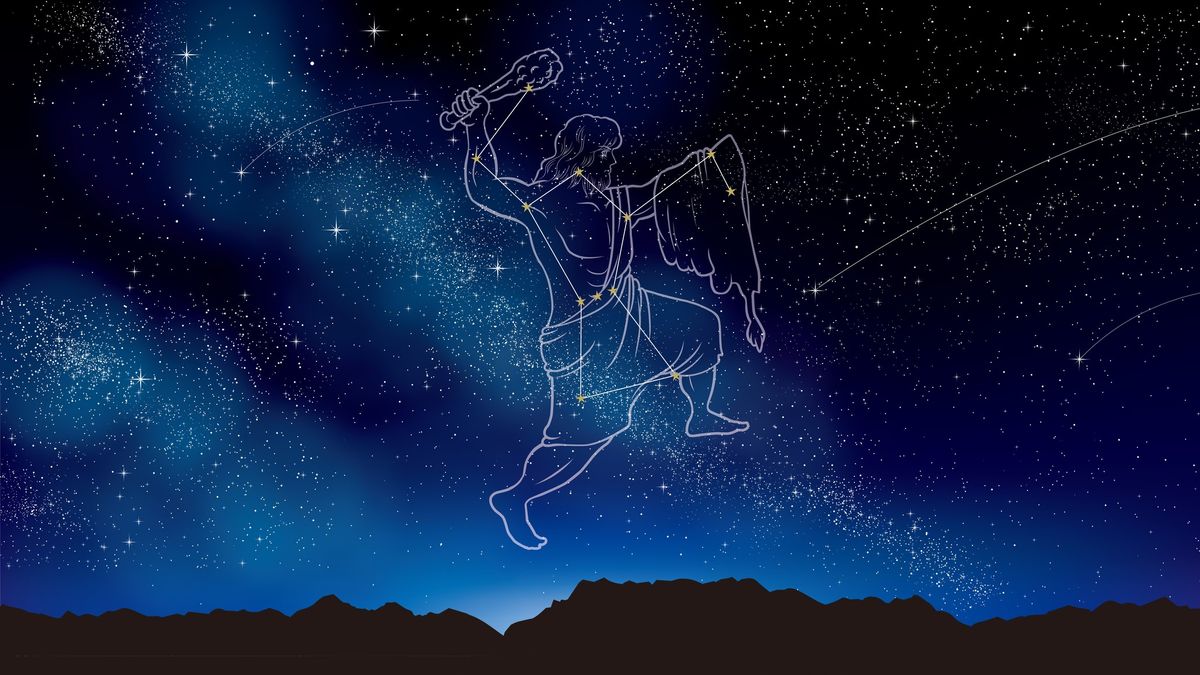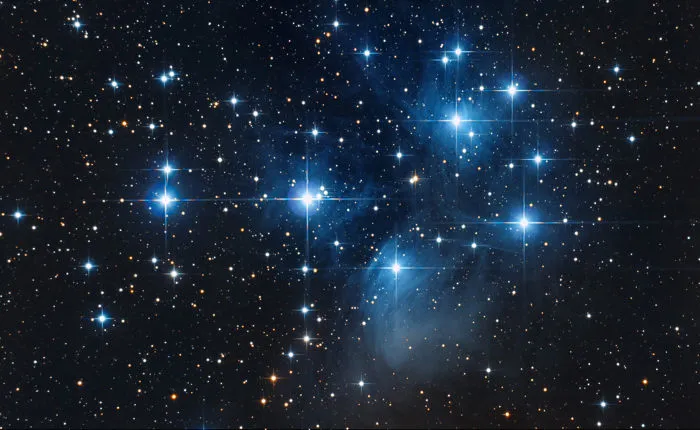Anúncios
Immerse yourself in the captivating realm of the celestial world as we delve deep into the mesmerizing stories behind the constellations that dot our night sky. Every star, every constellation has a tale to tell, a secret to unveil. Each one, a silent spectator of the universe’s grandeur, holding its own unique place in the cosmos.
The twinkling celestial bodies that grace our night skies have, since time immemorial, enthralled mankind with their enigmatic charm. From ancient tribes gathering around fires to modern astronomers peering through powerful telescopes, humanity’s fascination with the stars remains unchanged. These glittering points of light are more than just random specks—they are ancient signposts in the sky, once used for navigation, storytelling, and spiritual guidance. Some cultures even believed that the stars were the souls of ancestors watching over the living.
Anúncios
Yet, how many of us know the stories etched in the starry canvas above? In this journey, we shall traverse through time and space, decoding the mysteries of the night sky, and delving into the fascinating folklore and mythology that gave birth to the constellations we see today. These stories, once whispered by sages and passed from generation to generation, continue to inspire awe and wonder to this day.
Drawing the curtains from the unseen, we’ll explore the intricate patterns formed by these celestial bodies, narrating tales of heroes, monsters, love, betrayal, and gods from ancient civilizations. Be it Orion, the mighty hunter from Greek mythology, or Ursa Major, the Great Bear that has found its place in numerous world cultures, every constellation has a compelling story to tell. So gear up and fasten your seat belts as we take off into the cosmos, ready to unlock the mysteries of the night sky. Let the stargazing begin!
Anúncios
The Constellations and their Fascinating Stories
The night sky, an awe-inspiring sight that has been a source of mystery and fascination for millennia, is strewn with clusters of stars known as constellations. These constellations, each with their unique stories, have been integral to human culture, serving as tools for navigation, storytelling, and marking seasonal changes.
The Zodiac Constellations and their Significance
Arguably the most well-known group of constellations are the twelve zodiac constellations. Each one is associated with an astrological sign and has its unique backstory rooted in ancient mythology. The Sun, the Moon, and the planets traverse through these constellations in a celestial path known as the ecliptic.
- Aries: Symbolized by the Ram, Aries has ties to the Golden Fleece’s story in Greek mythology.
- Taurus: This constellation is represented by the Bull and has connections to Zeus, the king of the gods.
- Gemini: Representing the Twins, Gemini is linked to the mythological characters Castor and Pollux.
- Cancer: The Crab, associated with a creature from the Twelve Labors of Hercules.
Exploring the Cosmic Myths
Constellations are not just clusters of stars; they hold cultural significance, containing myths and legends of civilizations long gone. These tales have been passed down through generations, providing a glimpse into our ancestors’ understanding of the universe. To many ancient peoples, the sky was not merely a backdrop—it was a living tapestry, a celestial chronicle filled with drama and divine intervention.
From the myths of the Greeks and Romans to the sky lore of the Egyptians, Chinese, and Indigenous peoples around the world, constellations have served as both a source of inspiration and a repository of cosmic order. They helped explain natural phenomena and human behavior, linking terrestrial events to the divine patterns above. Farmers used them to determine planting and harvesting seasons, while travelers looked to them to find their way across unfamiliar lands and seas.
The constellations became a kind of universal language—recognizable and revered across continents. In Polynesian cultures, for instance, skilled navigators interpreted star paths, or “star lines,” to cross thousands of miles of open ocean without maps or compasses. Meanwhile, in Mesopotamia, the stars were inscribed onto clay tablets, forming the early roots of both astronomy and astrology.
Even today, when we gaze upward, we are engaging in an ancient ritual of wonder. The myths embedded in the constellations still speak to us, offering stories of courage, ambition, vanity, jealousy, and redemption. They are reflections of ourselves projected onto the night sky—a shared human experience that spans both time and culture. And in rediscovering these stories, we keep alive the voices of those who first told them under starlit skies so many centuries ago.
The Story of Orion the Hunter
One of the most recognizable constellations, Orion, is named after a mighty hunter in Greek mythology whose legend has captivated stargazers for generations. The constellation itself is easily identified by three bright stars in a straight line that form Orion’s Belt, flanked by two brilliant stars—Betelgeuse and Rigel—marking his shoulder and foot, respectively. When you observe Orion in the night sky, you are not merely looking at stars; you are witnessing a story frozen in light.
Orion’s myth is one of strength, pride, love, and ultimately, tragedy. There are several versions of the tale, but a widely told narrative involves Orion falling in love with the Pleiades, the seven daughters of Atlas and Pleione. Captivated by their beauty, Orion pursued them relentlessly across the earth. The sisters, distressed by his pursuit, pleaded for divine help. In response, Zeus transformed them into stars, and they took their place in the heavens as the Pleiades star cluster. Orion, still in pursuit, was eventually struck down—either by Artemis, whom he had wronged, or by a giant scorpion sent by Gaia. In some versions, Apollo tricks Artemis into killing Orion, further deepening the tragedy.
To honor both Orion and the Pleiades, the gods placed them among the stars, forever visible in the night sky. The constellation Scorpius, representing the scorpion that killed Orion, rises in the sky just as Orion sets, symbolizing the eternal chase and their enmity. This celestial choreography tells a timeless tale of desire and consequence, repeated night after night.
Orion’s prominence in the sky has made him an important figure not only in Greek mythology but also in many other cultures. In ancient Egypt, Orion was associated with Osiris, the god of the afterlife, while in Norse mythology, he may have been linked to a mythical hunter as well. These parallels across civilizations highlight the universal nature of the stars and their power to inspire shared myths across human history.
Observing Constellations
Observing constellations requires nothing more than a clear night sky and your naked eye, although binoculars and telescopes can enhance the experience. Finding a spot away from city lights is often the first and most important step. Light pollution can wash out many of the fainter stars, making it harder to see the full grandeur of the night sky. The farther you can get from urban areas, the more constellations you’ll be able to spot.
To start your stargazing journey, it’s helpful to use a star chart or a mobile app that maps the night sky in real time. These tools allow you to point your phone toward a section of the sky and identify the constellations and planets currently visible. As your familiarity grows, you’ll begin to recognize not only the more prominent constellations like Orion and Ursa Major but also the lesser-known ones such as Lepus or Lyra.
Many people find it enriching to stargaze during particular times of the year when certain constellations are at their peak visibility. For instance, during summer evenings in the Northern Hemisphere, constellations such as Cygnus the Swan and Aquila the Eagle soar overhead. In winter, the southern sky becomes a showcase for Taurus, Gemini, and of course, the dazzling Orion. Tracking these seasonal shifts in the sky deepens your connection to both nature and time.
Patience is also key. The sky rewards those who linger and look closely. Over time, your eyes will adjust to the darkness, allowing you to see even fainter stars. And if you’re fortunate enough to have access to a telescope, your celestial discoveries will grow even richer—from star clusters to nebulae nestled within familiar constellations. Each stargazing session becomes a doorway to timeless stories and endless wonder, waiting to unfold in the vast theater of the night.
The Best Times to Observe
While some constellations are visible all year round, others are seasonal, meaning they can only be observed at certain times of the year. For instance, Orion is most visible in the winter, while the Summer Triangle, an asterism made up of stars from three different constellations, is best observed in the summer.
The Modern Uses of Constellations
Despite their ancient origins, constellations remain crucial in modern times. From celestial navigation to the naming of newly discovered celestial objects, constellations are a fundamental part of our understanding of the cosmos. In the field of astronomy, constellations act as a framework for mapping the sky. By dividing the celestial sphere into 88 officially recognized regions—each corresponding to a constellation—astronomers can reference the location of stars, galaxies, and phenomena with precision.
Modern astronomers also rely on these defined boundaries to catalog and name new celestial discoveries. When a supernova, comet, or other deep-sky object is identified, its position is often referenced within the boundaries of the nearest constellation. This system allows scientists to track observations consistently across global institutions, ensuring a standardized understanding of space.
Constellations are also still used in celestial navigation, especially by sailors and pilots navigating remote areas without modern instruments. Knowledge of star positions and their movements has been passed down through generations and is still taught in some military and survival training programs today. Moreover, amateur astronomers and astrophotographers continue to use constellations as visual guides to locate planets, meteor showers, and other sky events.
Even in popular culture and education, constellations serve an important role. They appear in textbooks, planetarium shows, and science curricula to inspire curiosity and provide a tangible connection between students and the universe. Their stories help bridge the gap between science and storytelling, making the night sky both a classroom and a canvas of imagination.
Constellations in Astronomy
In astronomy, constellations serve as a coordinate system to map the night sky and locate celestial objects. The International Astronomical Union recognizes 88 official constellations, which cover the entire celestial sphere.
Furthermore, the names and stories of constellations often serve as inspiration for naming newly discovered stars, galaxies, and other astronomical phenomena.
Conclusion
Understanding the constellations not only unlocks the mysteries of the night sky but also allows us to connect with our past and share in the wonder of the universe. As we continue to explore and learn about our cosmos, the constellations remain a testament to our enduring quest to make sense of the world above us.
In conclusion, “Unlock the Mysteries of the Night Sky: Discover the Fascinating Stories Behind the Constellations” provides a thrilling journey across the celestial sphere. A refreshing blend of science and mythology, it enlightens readers on the captivating narratives that have given birth to the various constellations. Such an exploration not only enhances our understanding of the universe, but also deepens our appreciation for the cultures that saw these patterns in the night sky and wove intricate tales around them.
Moreover, this piece successfully deciphers the science behind these celestial formations, making astrophysics accessible and engaging for everyone. In doing so, it has the potential to inspire future astronomers, scientists, or simply curious minds seeking to unlock the mysteries of the cosmos.
Lastly, this article reaffirms the timeless charm of stargazing, portraying it as not just an observational hobby, but a way to connect with our ancestors, our history, and ultimately, our place in the universe. Truly, the fascinating stories behind the constellations offer an enriching experience that melds the past with the present, myth with science, and sky with the observer. 💫🌌🔭
Overall, this mesmerizing exploration of the constellations brings the wonders of the night sky closer to home, and rekindles our sense of curiosity and wonder.

